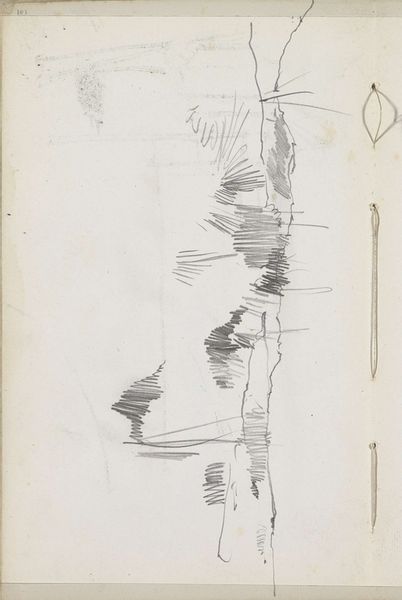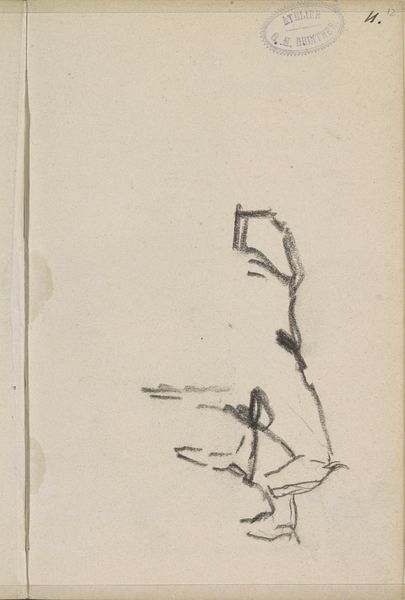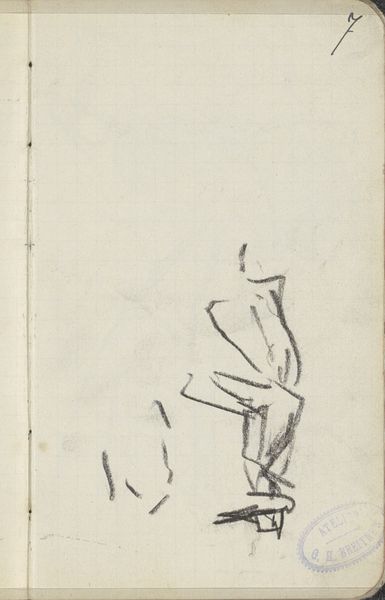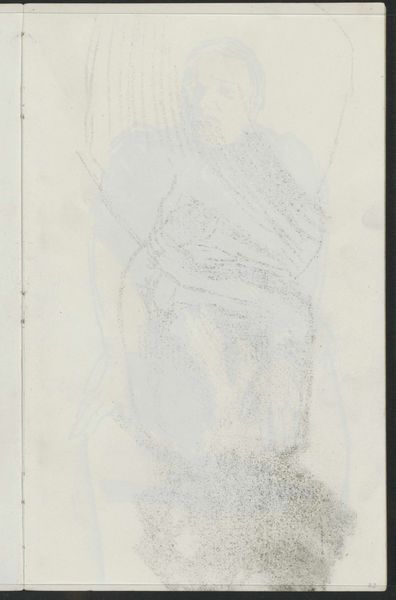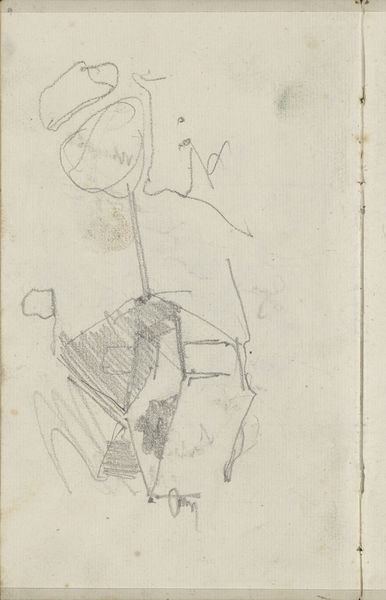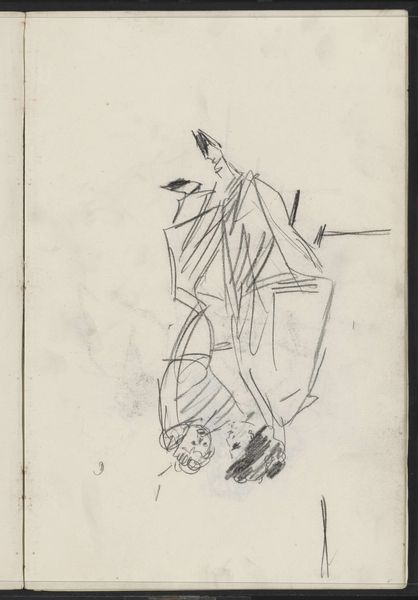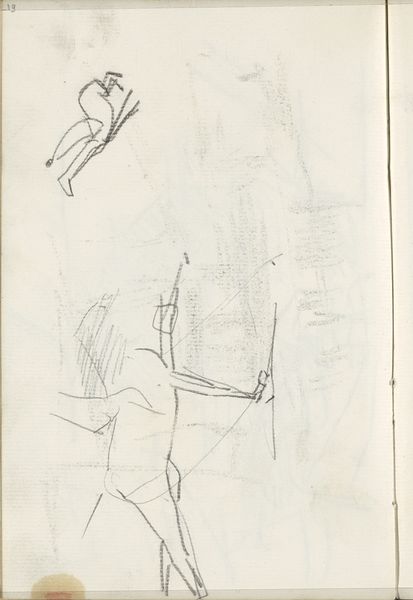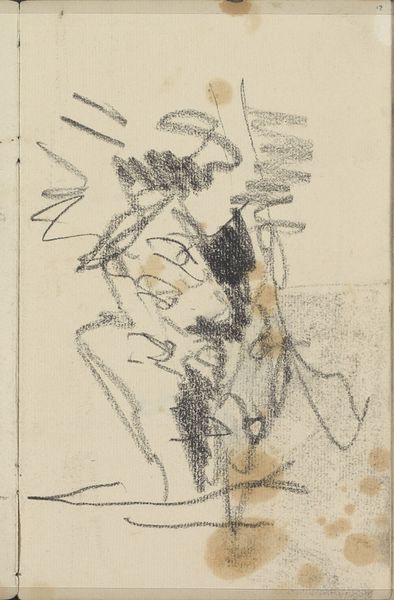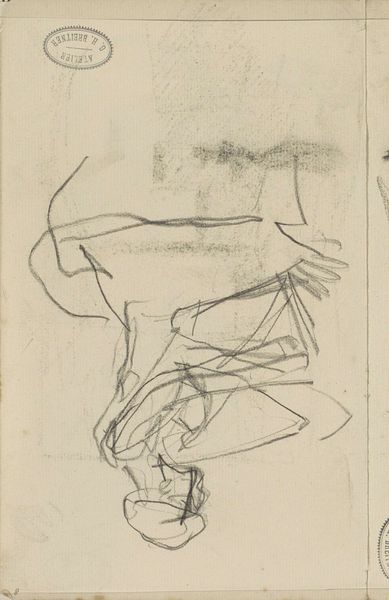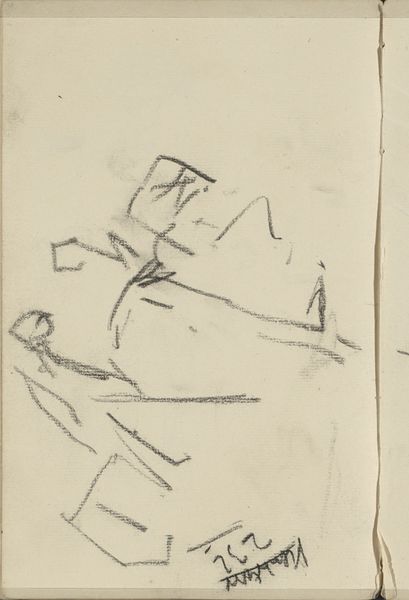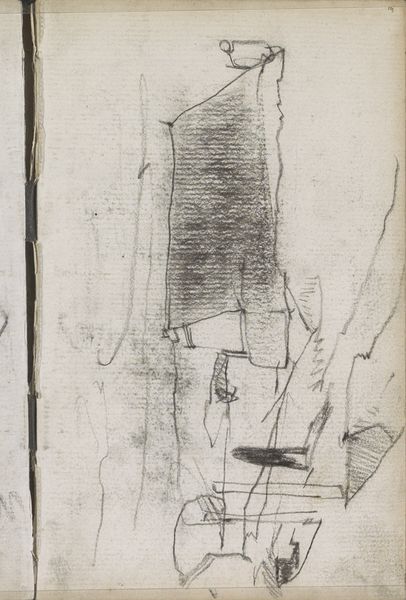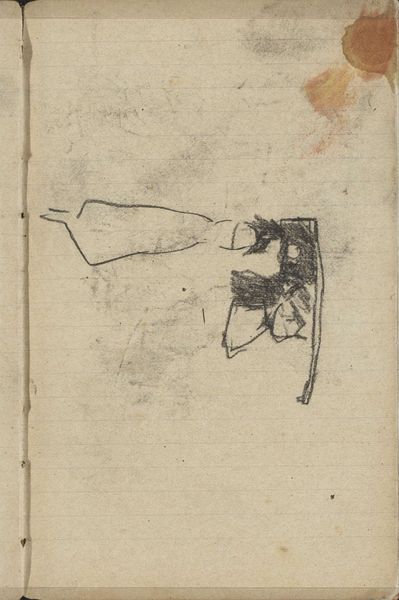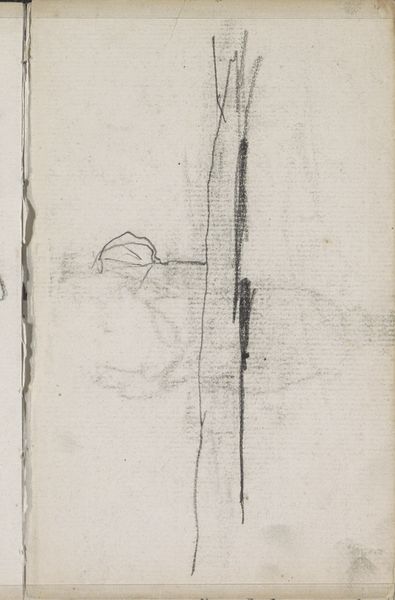
drawing, pencil
#
drawing
#
amateur sketch
#
light pencil work
#
quirky sketch
#
dutch-golden-age
#
impressionism
#
incomplete sketchy
#
figuration
#
personal sketchbook
#
idea generation sketch
#
ink drawing experimentation
#
sketch
#
pen-ink sketch
#
pencil
#
sketchbook drawing
#
sketchbook art
#
realism
Copyright: Rijks Museum: Open Domain
Editor: This is "Koe," a pencil drawing by George Hendrik Breitner, possibly from 1883 to 1885. It's a quick sketch, very sparse. What strikes me is its unfinished quality – almost like a fleeting impression captured on paper. What do you see in this piece? Curator: I see a glimpse into Breitner's process, a raw and immediate interaction with his subject. It's not just a cow, but an exploration of form and the lived experience of working animals within the context of a rapidly industrializing Dutch society. Consider the societal view of labor; How might Breitner be engaging with those ideas of productivity and worth? Editor: That's interesting, I hadn't thought of it in relation to industrialization. Is there a connection to social activism here, even though it seems like a simple sketch? Curator: Absolutely. Breitner was known for depicting the lives of working-class people in Amsterdam, engaging with social realities and questioning the romanticized views of rural life often seen at the time. His involvement with socialist circles, though not formally documented, reflects that he may be attempting to reveal a contrast between romanticizing a working animal's life versus their true living circumstances. How can we understand art from the lower class in relation to art for a different class of viewer? Editor: So, even a seemingly simple sketch of a cow can be interpreted as a form of social commentary, critiquing the existing power structures and class divisions? Curator: Precisely. It asks us to confront the realities of labour and class, inviting us to look beyond the surface and consider the underlying social and political narratives. Editor: That’s a very different perspective than I had coming into this. It makes me wonder what other hidden narratives exist within art we consider traditional. Curator: Exactly! Now, the task lies in continuously challenging assumptions and asking difficult questions to reveal those hidden stories.
Comments
No comments
Be the first to comment and join the conversation on the ultimate creative platform.
